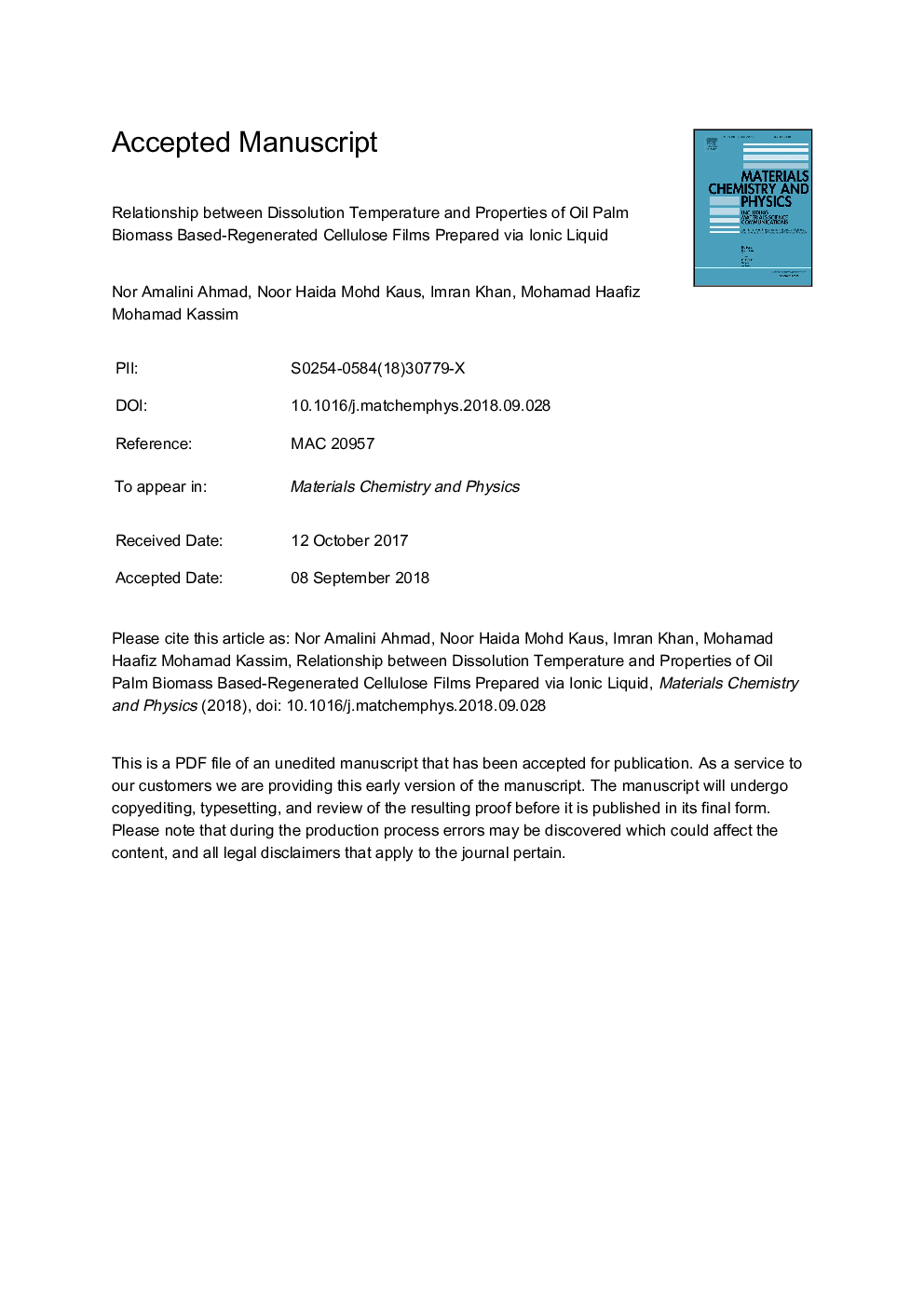| Article ID | Journal | Published Year | Pages | File Type |
|---|---|---|---|---|
| 11026702 | Materials Chemistry and Physics | 2019 | 27 Pages |
Abstract
In this article, we described fabrication of regenerated cellulose (RC) films derived from oil palm empty fruit bunch-microcrystalline cellulose (OPEFB-MCC) via ionic liquid 1-butyl-3-methylimidazolium chloride [BMIM][Cl]. The properties of RC films as a function of varied dissolution temperature; 75, 80 and 85â¯Â°C were unraveled by means of their water vapor permeability, light opacity, mechanical performance, thermal characteristic and morphology. It was shown that when dissolution temperature was increased, the barrier properties of RC films were enhanced as indicated by increment of opacity values (1.44-1.63) but decline of water vapor permeability values (0.95-1.30â¯Ãâ¯10â10â¯gâ¯sâ1â¯mâ1 Paâ1). We also observed an improvement in thermal stability of RC films as shown by the increase of their degradation temperatures; T20â¯=â¯264-266â¯Â°C and Tmaxâ¯=â¯273-281â¯Â°C. However, the films' mechanical performances denoted by TS and EAB values were slightly diminished with percentage reduction of 21.7% and 5.2%, respectively. Meanwhile, the films exhibited Tg without Tm, reflecting their highly amorphous structure after regeneration. Microstructural analyses of the films depicted uniform distribution of cellulose fragments on their cross-sectional surfaces thus indicated excellent dissolution of cellulose in the solvent.
Keywords
Related Topics
Physical Sciences and Engineering
Materials Science
Electronic, Optical and Magnetic Materials
Authors
Ahmad Nor Amalini, Mohd Kaus Noor Haida, Khan Imran, Mohamad Kassim Mohamad Haafiz,
